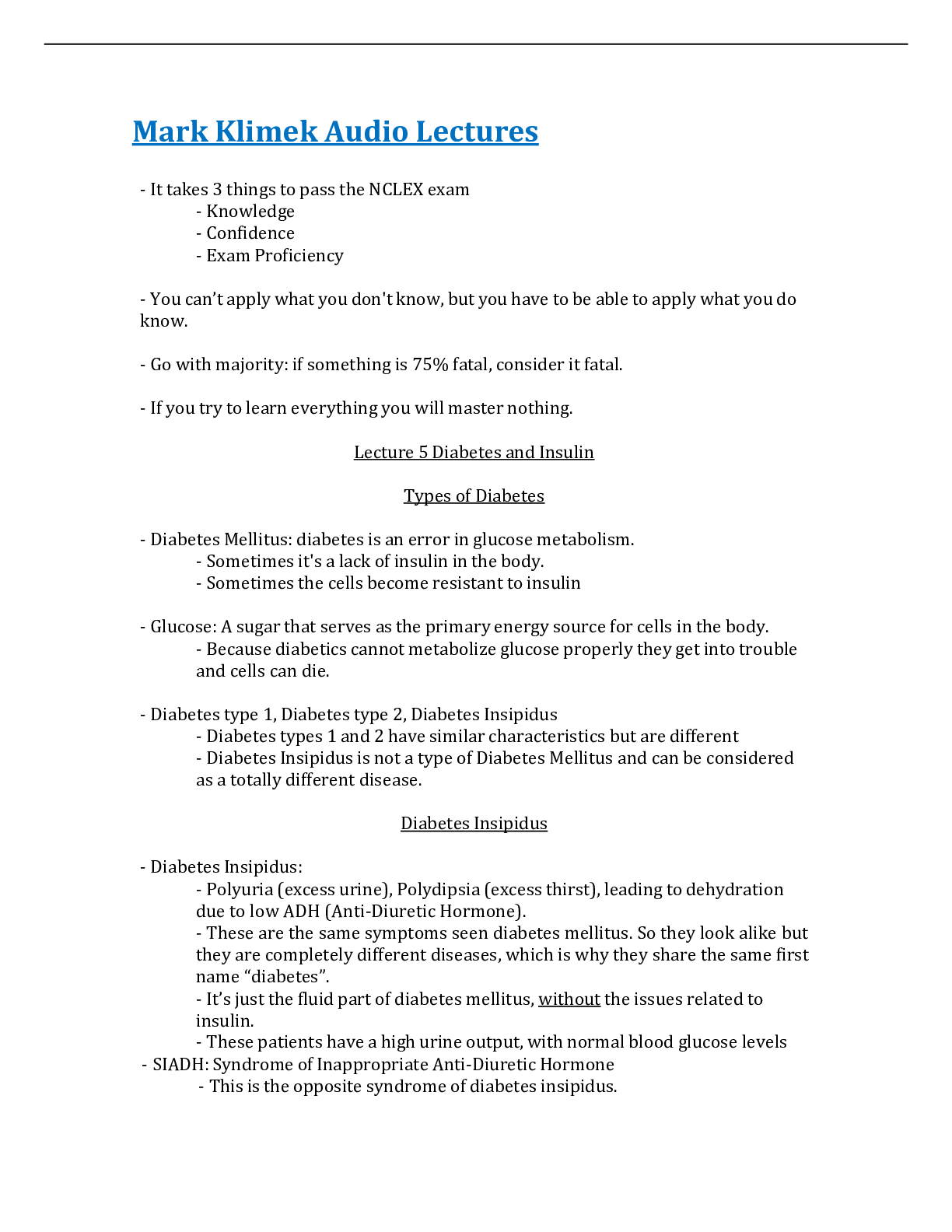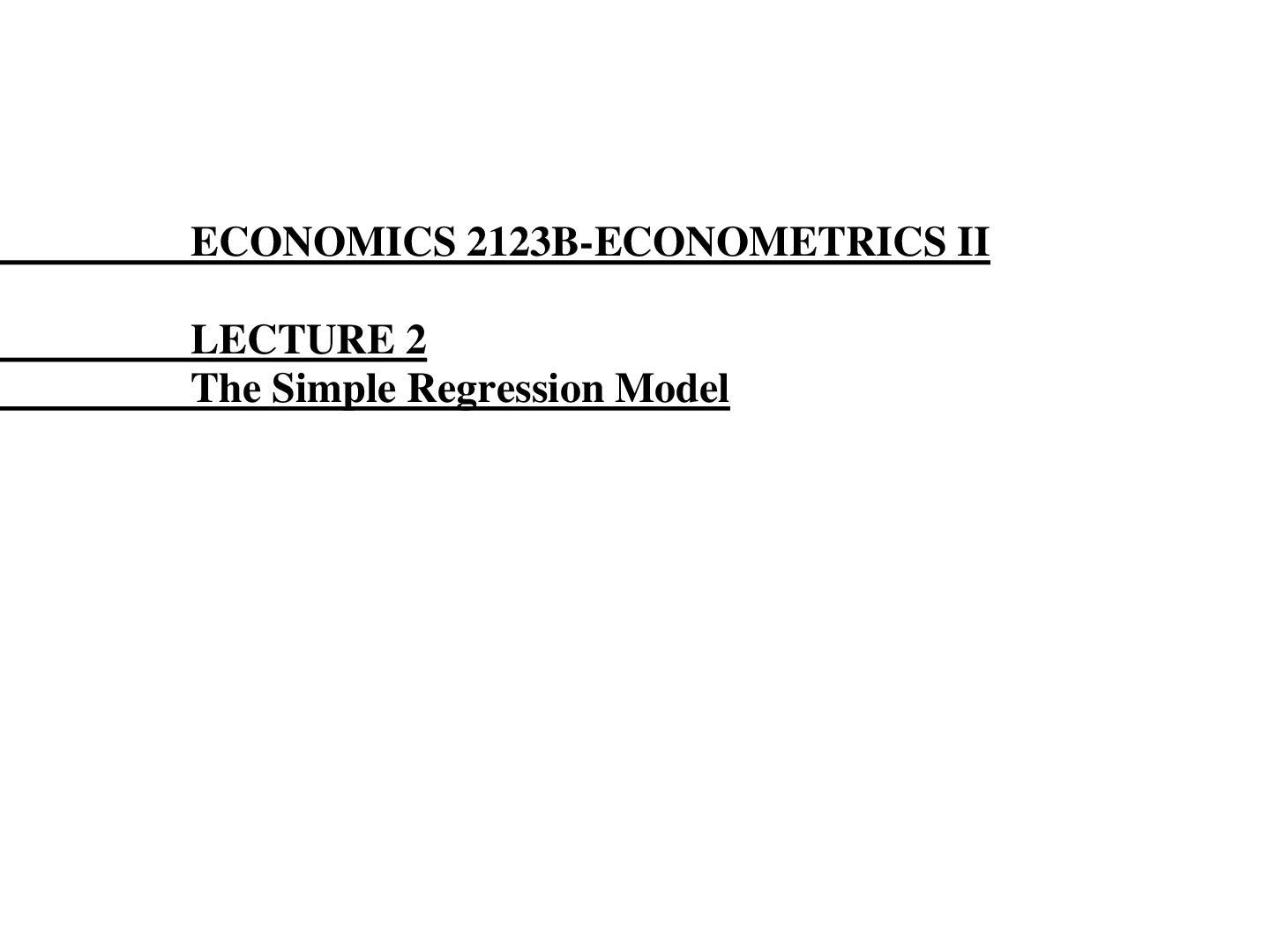*NURSING > LECTURE NOTES > Lecture 5 Diabetes and Insulin & Types of Diabetes (All)
Lecture 5 Diabetes and Insulin & Types of Diabetes
Document Content and Description Below
- It takes 3 things to pass the NCLEX exam - Knowledge - Confidence - Exam Proficiency - You can’t apply what you don't know, but you have to be able to apply what you do know. - Go with ma... jority: if something is 75% fatal, consider it fatal. - If you try to learn everything you will master nothing. Lecture 5 Diabetes and Insulin Types of Diabetes - Diabetes Mellitus: diabetes is an error in glucose metabolism. - Sometimes it's a lack of insulin in the body. - Sometimes the cells become resistant to insulin - Glucose: A sugar that serves as the primary energy source for cells in the body. - Because diabetics cannot metabolize glucose properly they get into trouble and cells can die. - Diabetes type 1, Diabetes type 2, Diabetes Insipidus - Diabetes types 1 and 2 have similar characteristics but are different - Diabetes Insipidus is not a type of Diabetes Mellitus and can be considered as a totally different disease. Diabetes Insipidus - Diabetes Insipidus: - Polyuria (excess urine), Polydipsia (excess thirst), leading to dehydration due to low ADH (Anti-Diuretic Hormone). - These are the same symptoms seen diabetes mellitus. So they look alike but they are completely different diseases, which is why they share the same first name “diabetes”. - It’s just the fluid part of diabetes mellitus, without the issues related to insulin. - These patients have a high urine output, with normal blood glucose levels - SIADH: Syndrome of Inappropriate Anti-Diuretic Hormone - This is the opposite syndrome of diabetes insipidus. - Oliguria (low urine output), decrease in thirst because they hold on to fluids. - These patients have a low urine output and gain weight suddenly due to holding onto water, and have a normal blood glucose levels. - Urine output vs. Specific gravity urine: - Urine output: amount of urine expelled in a specific amount of time - Specific gravity urine: a measure of the concentration of solutes in the urine - The more urine out = lower specific gravity urine - Patients with diabetes mellitus and insipidus have more urine output (polyuria), therefore lower specific gravity urine. - The less urine out = higher specific gravity urine - Patients with SIADH have less urine output (oliguria), therefore have a higher specific gravity urine. .........................................CONTINUED..................................... [Show More]
Last updated: 1 year ago
Preview 1 out of 5 pages
Instant download

Buy this document to get the full access instantly
Instant Download Access after purchase
Add to cartInstant download
Reviews( 0 )
Document information
Connected school, study & course
About the document
Uploaded On
Aug 27, 2021
Number of pages
5
Written in
Additional information
This document has been written for:
Uploaded
Aug 27, 2021
Downloads
0
Views
53




